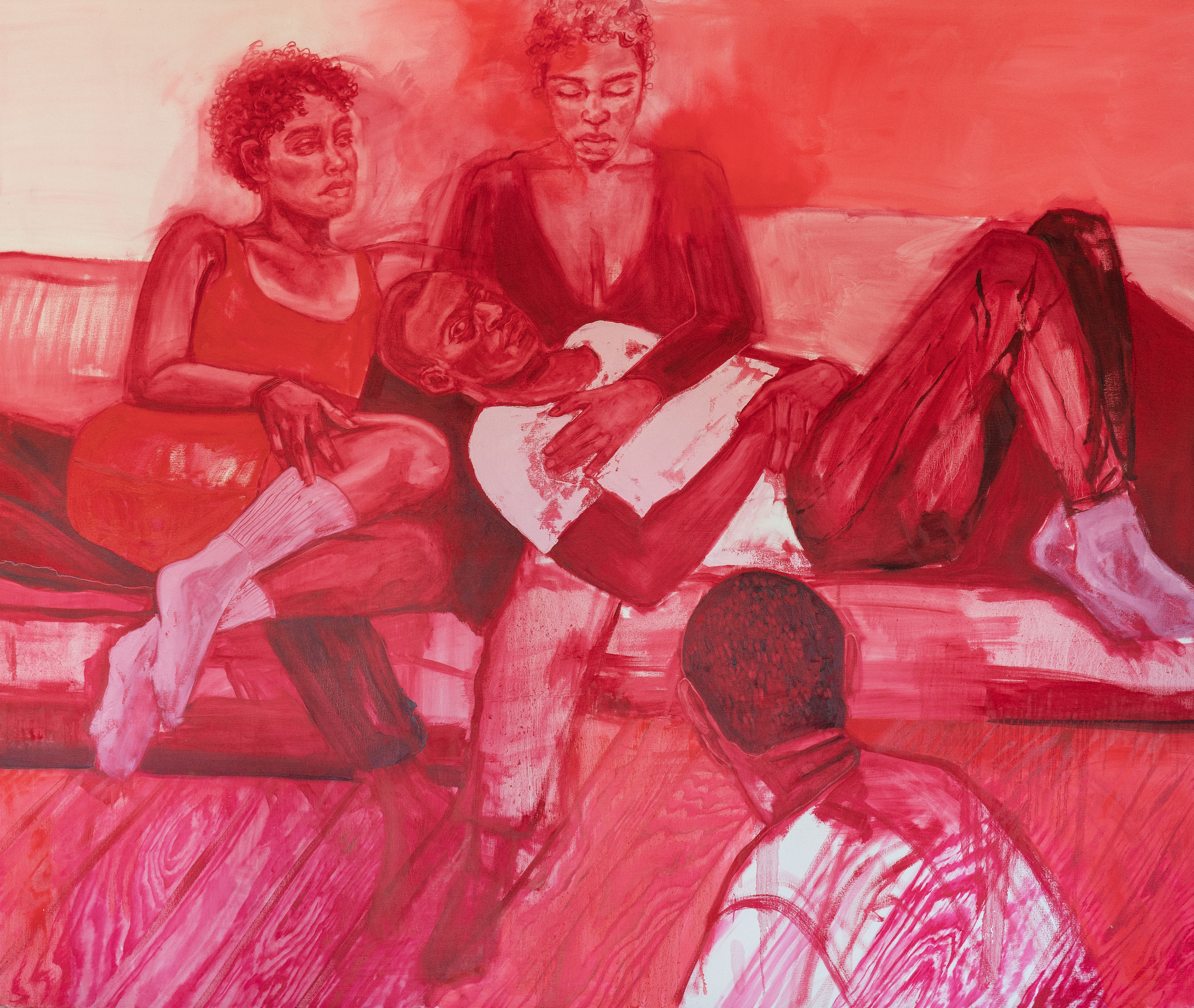
By Kevanté A. C. Cash
NAGB Correspondent
The National Art Gallery of The Bahamas (NAGB) continues to provide a platform and be a safe space for artists across all genres to lay bare the sentiments of the heart through thematic responses to exhibition calls that seek to engage the wider Bahamian populace.

“No one ever sees me cry”, (2018). Oil on canvas. Gabrielle Banks.
Gabrielle Banks, student artist at the Rhode Island School of Design (RISD), took the opportunity of submitting works into the ninth National Exhibition (NE9) “The Fruit and The Seed” as a way to vocalise her thoughts and opinions and to heal from past pains and traumas. Furthermore, the artist also intended to inspire a discourse that is oftentimes swept underneath the rug and left for the minority of society to engage in. In her statement for the the four paintings presented in the show, Banks notes:
“As of late, my work has evolved from a general exploration of race, identity and gender, to one that focuses on the intimate experiences of my personal life. Each painting functions as a memory to communicate the long-term and continual effects of trauma. Within these paintings, this conversation of trauma is articulated through the imagery created from being a victim of sexual assault and abusive relationships. A previous painting appears within another as a conversation between two experiences, similar to the way the mind is triggered by a recurring memory or dream.”

“Negative Nostalgia”, (2018). Oil on canvas. Gabrielle Banks.
Ironically though, Banks has not received much feedback from friends, family and/ or admirers of her artistry about her recent works discussing the issues of rape, rape culture and sexual assault. One may deem this counterproductive when considering the fact that reported cases of rape have increased by 12 per cent in 2018 when compared to 2017 (The Tribune, 2018).
Bahamian writer, poet and documentarian Marion Bethel of the United Nations Committee on the Elimination of Violence Against Women (CEDAW) said in a December 2018 publication, “The 12 percent increase in rapes this year is not only alarming but is evidence The Bahamas has not given enough attention to very serious gender inequality issues. The government was supposed to set up a gender-based violence authority at least two years ago. I don’t think that has happened as yet to provide an overall strategy as to how to address the issue of rape, which is really a serious problem for women and girls… we as a society really need to address this problem because it affects women’s productivity in the workplace, it affects our homes, it affects women in the streets and it affects us at the employment level” (The Tribune, 2018).

“Nighttime Memories”, (2018). Oil on canvas. Gabrielle Banks.
Though this may be true for many, Bahamian women and in particular, Black women from the wider Caribbean/African diaspora have been made to feel ashamed of telling their stories and speaking on their experiences. Caribbean culture has taught its women to silence their voices so much so to “save face” for father, uncle, family friend, mother’s boyfriend, clergyman and the list continues, to the point where they start doubting their truths and experiences.
Victims of sexual assault and violence are left to trivialise their own identity, agency and sanity through such questions: “Is this body still mine to carry?” “Am I crazy for feeling this way?” “Maybe the incident didn’t happen at all?”

“Red Room”, (2018). Oil on canvas. Gabrielle Banks.
Banks seeks to address these issues within self as a survivor of past traumas through painting self-portraits in hopes that each stroke of the paintbrush would heal the wounds that she could not look to others to mend. These works mark a personal milestone, citing:
“Making work concerning rape and being a victim of sexual assault is difficult and talking about it is difficult but constant conversations surrounding this issue, rape culture and consent in general aren’t really a part of conversations that are happening in The Bahamas to the extent of which they necessarily should be, because many individuals fall victim to being in these kinds of abusive relationships. I think NE9 was just a fantastic opportunity and really just a blessing to be a part of.I generally just hope that through my work and being shown among such an amazing collection of artists, I can help produce more conversations surrounding abuse or at least help relieve the small amount of isolation that I kind of experienced a few years ago, which is generally what the work is about – using painting as a form of therapy to communicate these ideas and thoughts that were so hard for me to articulate a few years ago.”

Portrait of Gabrielle Banks, courtesy of the artist.
Banks, and many other Bahamian women’s rights advocates have planted the seed through their work of advocacy, in this case by an artistic means, that is left up to the larger populace of Bahamian people to water it so that it may bloom through fruitful conversations and see change, adhering to the adage of ‘Each one reaching one’.
The NAGB is open Tuesday through Saturday from 10:00 a.m. to 5:00 p.m. and Sundays from 10:00 am to 5:00 p.m. to view the works by the 38 artists supported in “The Fruit and The Seed.”. Sundays are always FREE for Bahamians and Bahamian residents. The NE9 runs through April 7th, 2019.